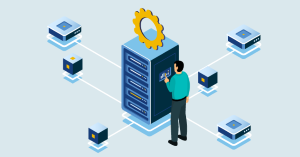Email has become an essential mode of communication, connecting individuals and businesses across the globe. While email provides unparalleled convenience, it also comes with its fair share of security risks. The sensitive information shared through emails, such as personal details, financial transactions, and confidential business data, underscores the critical importance of email safety. In this guide, we'll delve into the key aspects of email safety and provide practical tips to ensure your digital communication remains secure.
1. Choosing a Secure Email Provider
The first step in ensuring email safety begins with selecting a reputable and secure email service provider. Opt for providers that offer robust encryption, two-factor authentication (2FA), and a strong track record of prioritizing user privacy. Well-established providers like Gmail, Outlook, and ProtonMail offer these features, helping to protect your emails from unauthorized access.
2. Enabling Two-Factor Authentication (2FA)
Two-factor authentication (2FA) is a simple yet effective way to enhance your email security. With 2FA enabled, accessing your email requires not only a password but also a secondary verification method, such as a unique code sent to your mobile device. This adds an extra layer of protection against unauthorized access, even if your password is compromised.
3. Crafting Strong and Unique Passwords
A strong password is your first line of defense against email breaches. Create passwords that are complex, combining uppercase and lowercase letters, numbers, and special characters. Avoid using easily guessable information such as birthdays or names. Furthermore, ensure you use a unique password for each online account, preventing a domino effect if one account is compromised.
4. Beware of Phishing Attempts
Phishing remains one of the most prevalent email security threats. Phishing emails often mimic legitimate communications, urging recipients to click on malicious links or provide sensitive information. Exercise caution when clicking on links or downloading attachments, especially if the email sender is unknown. Check the sender's email address closely for any discrepancies, and verify the authenticity of the email through other means if in doubt.
5. Encryption for Sensitive Information
Encrypting sensitive information before sending it via email adds an extra layer of protection. Encryption scrambles the content of the email in a way that only the intended recipient can decipher it using a decryption key. Some email services offer built-in encryption, but for added security, consider using encryption tools like Pretty Good Privacy (PGP) or services like SecureZIP.
6. Regular Software Updates
Keeping your email client and operating system up to date is crucial. Developers often release security patches to address vulnerabilities that could be exploited by hackers. Regularly updating your software ensures you benefit from these security enhancements.
7. Avoid Public Wi-Fi for Sensitive Emails
Public Wi-Fi networks are notorious for their lack of security. Avoid sending sensitive emails or accessing confidential information while connected to public Wi-Fi, as cybercriminals can intercept your data more easily on such networks. If you must access your email on the go, consider using a virtual private network (VPN) to encrypt your connection.
8. Regularly Monitor Your Account
Regularly review your email account for any suspicious activity. If you notice any unfamiliar emails, changes in settings, or unusual login attempts, take immediate action. Change your password and notify your email provider if necessary.
Conclusion
Email safety is not a one-time task but an ongoing commitment to protecting your digital communication. By selecting a secure email provider, implementing strong passwords and 2FA, being cautious about phishing attempts, using encryption, and staying up to date with software patches, you can significantly reduce the risk of falling victim to email-related security breaches. By following these best practices, you can confidently navigate the digital landscape while safeguarding your sensitive information.
Date of Input: 31/08/2023 | Updated: 31/08/2023 | rizalkhanafie
MEDIA SHARING



























